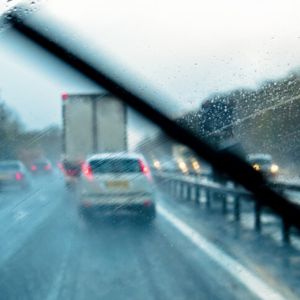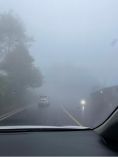Driving in the Rain

Rain is necessary, but it can make for less-than-ideal driving conditions. Out of all the dangerous driving conditions, rain is the one you are most likely to be driving in at some point. Obviously, it’s best not to drive in it if you can avoid it—especially heavy rain—but here are some helpful tips and reminders about safe driving in the rain in case you need them.
Equipment
Check your car’s wet driving equipment while the weather is good so you know it’s safe when bad weather strikes. While you should periodically check these things, it’s particularly important before driving in the rain:
- Windshield Wipers – This one is probably the most important. If you ever notice your wipers are leaving streaks on your windshield, change them. It’s an inexpensive fix and fairly easy to do. If you don’t think you know how, some auto parts stores will change them for you if you buy them there.
- Tires – Your tires are just as important as your windshield wipers when driving in wet weather. After all, bald tires can’t grip wet pavement, and you run the risk of hydroplaning. To check your tire tread, insert a penny into your tire's tread groove with Lincoln's head upside down and facing you. If you can see his entire head, your tire tread depth is less than 2/32 inch and it's time to replace your tires. You can do the same test with a quarter. If the tread touches Washington’s head, you have 4/32 inches of tread remaining—slightly more than you do with the penny test, but you should still consider replacing your tires.
- Lights – Being able to see, and other drivers being able to see you, is imperative in wet driving conditions because rain dims visibility. Make sure your car’s headlights, taillights and brake lights all work.
- Defrosters - Windows can fog up in the rain sometimes, so make sure your defrosters work. They aren’t just for winter!
Driving
Now that you’ve checked your equipment, here are some driving tips:
- Slow down! Your car’s response time is slower on wet, slick roads and speeding can cause you to hydroplane.
- Turn on your windshield wipers. If you have the wiper delay feature, adjust the speed to the amount of rain that’s coming down.
- Turn on your headlights, NOT your hazard lights. According to AccuWeather, hazard lights should only be used if your car is not moving (unless you are part of a funeral procession). Some people mistakenly believe you need to turn on your hazard lights, but this can cause confusion among other drivers. In some states, using hazard lights when your vehicle is moving is illegal.
- Don’t use cruise control. It’s easy to hydroplane on wet roads, and cruise control can make hydroplaning worse because it keeps the car going at a constant speed.
- Keep a safe distance between you and the car in front of you so you don’t have to hit the brakes hard. This gives you plenty of time to stop so you can take your foot off the accelerator before needing to use the brakes.
- Don’t drive through standing water—you don’t know what’s underneath it or how deep it is, and if it’s too deep it can damage your car’s undercarriage or engine, or send it floating—and then you have no control over it and can’t stop it from hitting something.
- If you find yourself hydroplaning, just take your foot off the gas—don’t hit the brakes, as tempting as that might be. Also, turn the steering wheel in the direction the car should be going, just like you would do on ice.
Ideally you encounter more sunny days when you are driving and you are able to stay out of the rain. Since that’s not always likely, we hope you remember these tips and find them helpful.
-
Driving During a Storm
 What to Do
What to DoDriving in the rain is one thing, but what if it starts to hail or tornado sirens go off when you’re driving?
-
Driving in Fog or Smoke
 How to See
How to SeeOne key to driving in fog is to see and be seen. Here’s what else you should—or shouldn’t—do.
-
Driving in Winter
 Learn How
Learn HowWinter driving can be some of the scariest driving of all. It’s definitely a learned skill, and this article will help.
